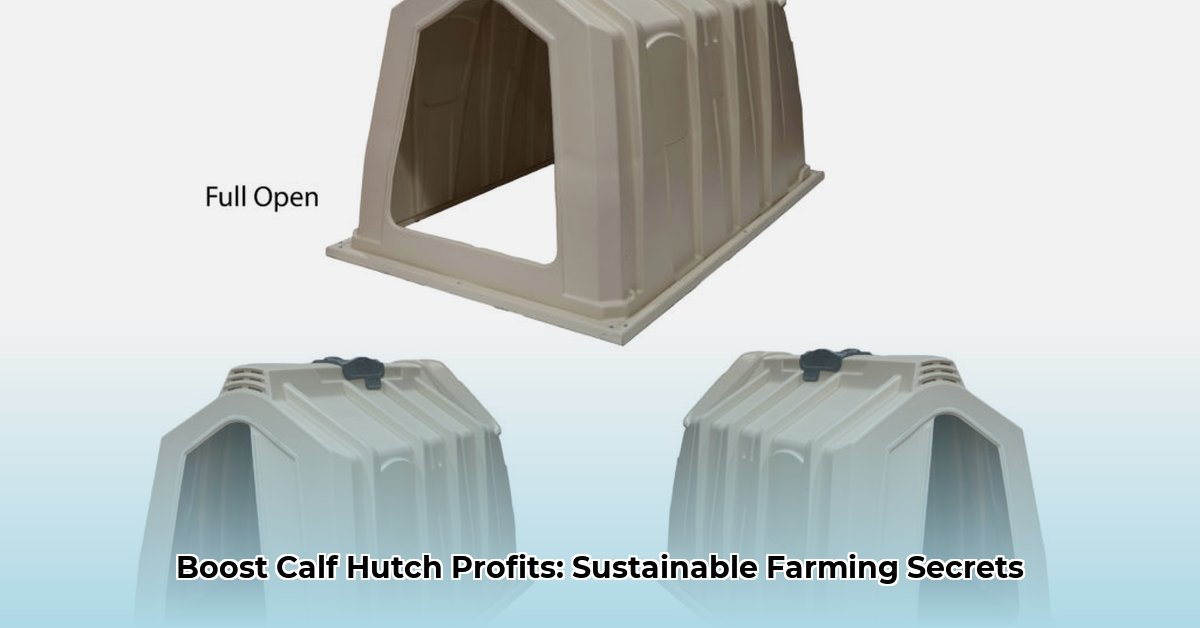
Precision livestock farming (PLF) is revolutionizing sustainable agriculture, offering significant opportunities to improve animal welfare, enhance efficiency, and reduce environmental impact. This guide provides a practical roadmap for implementing PLF technologies, specifically focusing on calf rearing and leveraging the resources available from Tractor Supply. We will explore the benefits, challenges, and step-by-step implementation strategies for integrating PLF into your existing farming operations. For more information on calf starter supplies, check out Tractor Supply resources.
Understanding Precision Livestock Farming (PLF) for Calves
PLF leverages technology to monitor and manage various aspects of livestock production. For calf rearing, this involves using sensors to collect data on key parameters such as temperature, activity levels, and feeding patterns. This data is then analyzed using artificial intelligence (AI) algorithms to identify potential health issues, optimize feeding strategies, and improve overall herd management. Think of it as having a constant, vigilant assistant monitoring each calf's well-being.
The Benefits of PLF and Calf Hutch Tractor Supply
Implementing PLF in your calf operation brings numerous advantages:
- Enhanced Animal Welfare: Early disease detection leads to quicker treatment, minimizing animal suffering and stress. Healthier calves are happier calves.
- Improved Efficiency: Optimized feeding strategies reduce waste and ensure calves receive the precise nutrition they need, leading to faster growth and increased profitability.
- Reduced Costs: Early intervention reduces veterinary costs and minimizes losses from illness and mortality, directly impacting your bottom line.
- Sustainable Practices: PLF contributes to sustainable farming by promoting efficient resource utilization and minimizing environmental impact. A well-chosen calf hutch from Tractor Supply further contributes to these benefits.
Challenges of PLF Adoption
Despite its many benefits, PLF adoption comes with its share of challenges:
- High Initial Investment: The upfront cost of purchasing and installing PLF technologies can be significant, potentially posing a barrier for smaller farms.
- Data Security & Privacy: Protecting sensitive data collected through PLF systems from breaches is crucial. Regulatory compliance (GDPR, CCPA, etc.) is paramount.
- Integration Complexity: Integrating various PLF technologies into existing farm infrastructure can be complex and require specialized expertise.
- Skill Development: Managing and interpreting the large volumes of data generated by PLF requires specialized skills and training.
Implementing PLF in Your Calf Operation: A Step-by-Step Guide
Adopting PLF is a phased process tailored to individual farm needs and resources. Here's a practical, step-by-step guide:
Assess Your Needs: Identify your farm's specific challenges and opportunities where PLF can bring the greatest impact. Are calf mortality rates high? Is feed efficiency low? What aspects of your operation could benefit most from data-driven insights?
Select Appropriate Technology: Choose PLF technologies that align with your farm's size, budget, and specific needs. Start with a manageable system and scale up gradually as your expertise grows.
Integrate with Existing Infrastructure: Ensure seamless integration of PLF technologies with your existing farm management systems. Proper integration is key to maximizing the benefits of your investment.
Invest in Training: The successful implementation of PLF relies not only on the technology itself but also on the knowledge and skills of your staff. Provide adequate training on data interpretation, system maintenance, and troubleshooting.
Monitor and Analyze Data: Regularly monitor the data generated by your PLF system to identify trends, patterns, and potential problems and make proactive adjustments to your management practices.
Choosing Your Calf Hutch from Tractor Supply
The calf hutch plays a vital role in overall calf health and well-being, complementing your PLF system. Key considerations when selecting a hutch from Tractor Supply include:
- Durability: Opt for robust, weather-resistant materials that can withstand daily wear and tear.
- Ventilation: Ensure adequate ventilation to maintain optimal temperature and humidity levels, minimizing the risk of respiratory problems.
- Hygiene: Choose hutches with easy-to-clean surfaces to minimize the risk of disease transmission.
- Space: Provide sufficient space for calves to move freely and develop properly.
Addressing Challenges and Risks: A Mitigation Strategy
The actionable intelligence table below summarizes key steps for addressing challenges and mitigating risks during PLF implementation:
| Challenge | Short-Term Mitigation Strategy | Long-Term Mitigation Strategy |
|---|---|---|
| High Initial Investment | Explore leasing options or phased implementation. | Seek grants or subsidies to offset costs. |
| Data Security & Privacy | Implement robust data encryption and access control procedures. | Establish formal data protection policies compliant with relevant regulations. |
| Integration Complexity | Work with experienced integrators to ensure seamless integration. | Invest in ongoing training and professional development. |
| Skill Development | Provide basic training for staff. | Invest in comprehensive training programs covering data analysis and system management. |
The Future of Sustainable Calf Rearing with PLF
PLF is transforming sustainable agriculture, paving the way for improved animal welfare, enhanced efficiency, and reduced environmental impact. Continuous advancements in sensor technology, AI algorithms, and data analytics promise further improvements in the years to come. Staying abreast of these developments will be crucial for maintaining a competitive edge in the agricultural sector.
Conclusion
By strategically integrating PLF technologies and selecting appropriate calf hutches from Tractor Supply, farmers can create a more sustainable, efficient, and profitable calf-rearing operation. This guide provides a foundation for understanding and implementing this transformative technology to enhance both animal welfare and business success.